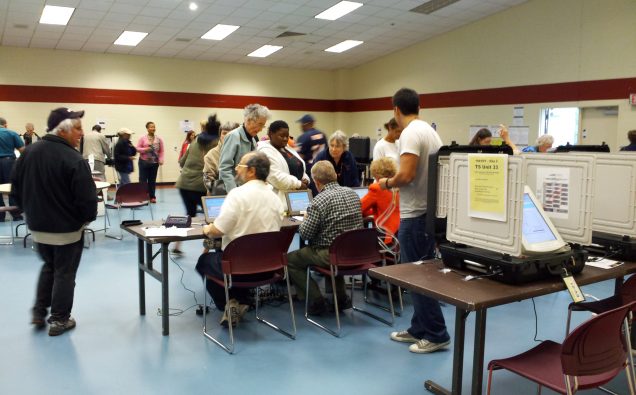
The seemingly endless US presidential campaign is just about over, with voters going to the polls on Nov. 8.
Tens of millions of Americans will cast ballots on Tuesday between the time the polls open on the East coast, and close 19 hours later in Hawaii. By midweek we should know who the next President will be – Hillary Clinton, who has held a narrow lead in opinion polling for weeks, or Donald Trump, who has been narrowing the gap in key states in recent days. The votes to be cast on Tuesday will tell the story.
Those ballots will be added to the votes that have already been cast early, in states that permit citizens to vote from five to fifty days before Election Day.
As that window has been closing, political observers have tried to spot trends. It’s not clear at this stage, which candidate is leading in which states – but some clues are available, based on demographic and voter registration information. No one can make reliable predictions, but here’s what we know so far.
In the 34 states and the District of Columbia where early voting is allowed, about 42 million people have already cast ballots. It seems certain that the anger and emotion of the 2016 election campaign motivated substantial numbers of people to come out before Nov. 8, and record turnouts have been recorded in key states including Florida, Nevada, Texas, and North Carolina.
Large numbers of Hispanic voters have cast ballots across the country, a good sign for Clinton, who has hammered on Trump’s repeated statements about illegal immigrants and the need to build a wall across the border with Mexico. Clinton opened a wide lead among Hispanic voters over the past three months, and record turnout in this group will work to her advantage.
This Clinton advantage may be offset by lower early voter turnout among registered African-American Democrats. Polls indicate that at least some Black Americans don’t feel that either candidate speaks to their concerns, a trend that both candidates – especially Clinton – have tried to reverse in the campaign’s final days. Democrats charge that Republican efforts to suppress the African-American vote in states such as North Carolina may be keeping voters away from the polls – a charge that Republicans deny.
The Trump campaign notes that in past elections, states that allow early voting have given Republican candidates a slight edge. Recognizing this, the Clinton campaign has mounted a robust effort to get registered Democrats to the polls, an effort that will continue through Election Day. A late push to get out the vote on Tuesday will be made by both campaigns in the key states of Michigan, New Hampshire and Pennsylvania, where voters did not have the option to vote early.
The early-voting process has become increasingly popular in recent years among voters anxious to cast ballots in a presidential election. The bitterness of this year’s campaign, with charges and accusations by both candidates and deep divisions increasingly evident between the nation’s demographic groups, has no doubt contributed to high early-voter turnout.
At this point, it is not clear yet as to who’s leading in that group of 42 million ballots cast, or whether or not that turnout will be decisive – if Clinton or Trump gained an advantage.
That will be one of many issues to be debated long after the polls close on Tuesday. On Tuesday night, millions of Americans will simply be glad the campaign is over. In the days and weeks that follow, the nation and the world will be anxious to know more about the policies and actions of President Clinton, or, President Trump.

















